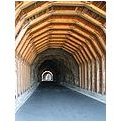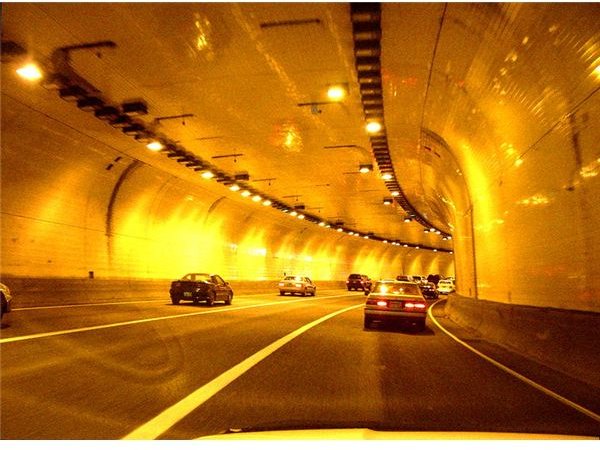Immersed-tube Method of Underwater Tunnel Construction
The first of these was built in Michigan under the Detroit River in 1910. The weight of these elements is such is that once they are sunk they would be no possibility of their ever floating again. Each immersed tube tunnel section will have temporary bulkheads across the ends that allow them to maintain their insides dry.
Immersed Tube Construction
Immersed tube construction of underwater tunnels will have its elements built separately in a dry dock or shipyard. These elements are then taken to the site where a trench has already been made under the water to receive them. The segments are then immersed in the water and then joined to each other to form the tunnel. Elements have weighed as much as fifty five thousand tons and in some cases have been as long as a football field.
The major advantage of such a method is that it does not need to use compressed air or other techniques to keep out the water from the tunnel as was being done in earlier construction. There are more than 100 such tunnels constructed all over the world that have used this technology, and some of them are kilometers long.
Image source: Wikipedia: tunnel
Procedure for construction

Tunnel elements are built in a casting basin or fabrication yard or on a ship lift platform. It is quite the usual thing to fabricate the outer shell of the element in steel. The section is then floated out to sea and when roughly in position, the steel forms are filled with concrete, which gives the tunnel body and weight. Tunnels have also been built using only concrete walls cast in a casting yard. Once the elements are ready, the two ends are fitted with temporary bulkheads that will not allow water to enter. Often the weight of the element is such that separate floatation arrangements have to be made to enable it to be shipped to the final spot. Rubber seals are also a part of the ends of each element.
While these tunnel elements are being made or cast, a trench is dug into the water channel where the tunnel will finally rest. This is done by dredging. This by itself is a laborious job, as excavated material has to be carefully removed so as not to disturb marine life or the surrounding ecology. This may even involve rock breaking and blasting where rocky layers are in the way of the alignment. It is also the norm to lay foundations for the tunnel element that may involve piling and concreting for the base.
Extremely high load-carrying capacity floating cranes are the norm nowadays, and these are mainly available on hire from suppliers all around the world. Once the element is in place at the water level, it is lowered into the trench and placed against the previous element that is already under water. Water between the bulkheads of the old and new element is then removed which causes the rubber seals to press against each other and close the joint.
Backfill material, obtained from the dredged material, or sand and gravel is then placed over the tunnel segments, permanently burying them at their final resting place.
Image source: Wikipedia: tunnel
Why Immersed Tube Is a Preferred Method of Construction
Costs for immersed tube tunnels are considerably lower than those involved in boring a tunnel beneath the water. The speed of construction is also greater, mainly because activities are simultaneously carried out for almost the entire length of the tunnel. A bored tunnel would be restricted to work and progress from two ends. There is also very little disruption of traffic on the water channel under which it is being laid. Boring of tunnels involves a lot of safety aspects, like dealing with water and air pressure, which is not the case in making immersed tubes.
However, such immersed tube tunnels are vulnerable to sabotage and shipping hazards as they are normally quite close to the surface of the bed of the channel. There is also a problem for waterproofing the joints, which remains a weak point. The connections have to be designed very carefully to take care of all forces being transferred on to them during the laying and joining process.
References
Immersed tunnels construction procedure
